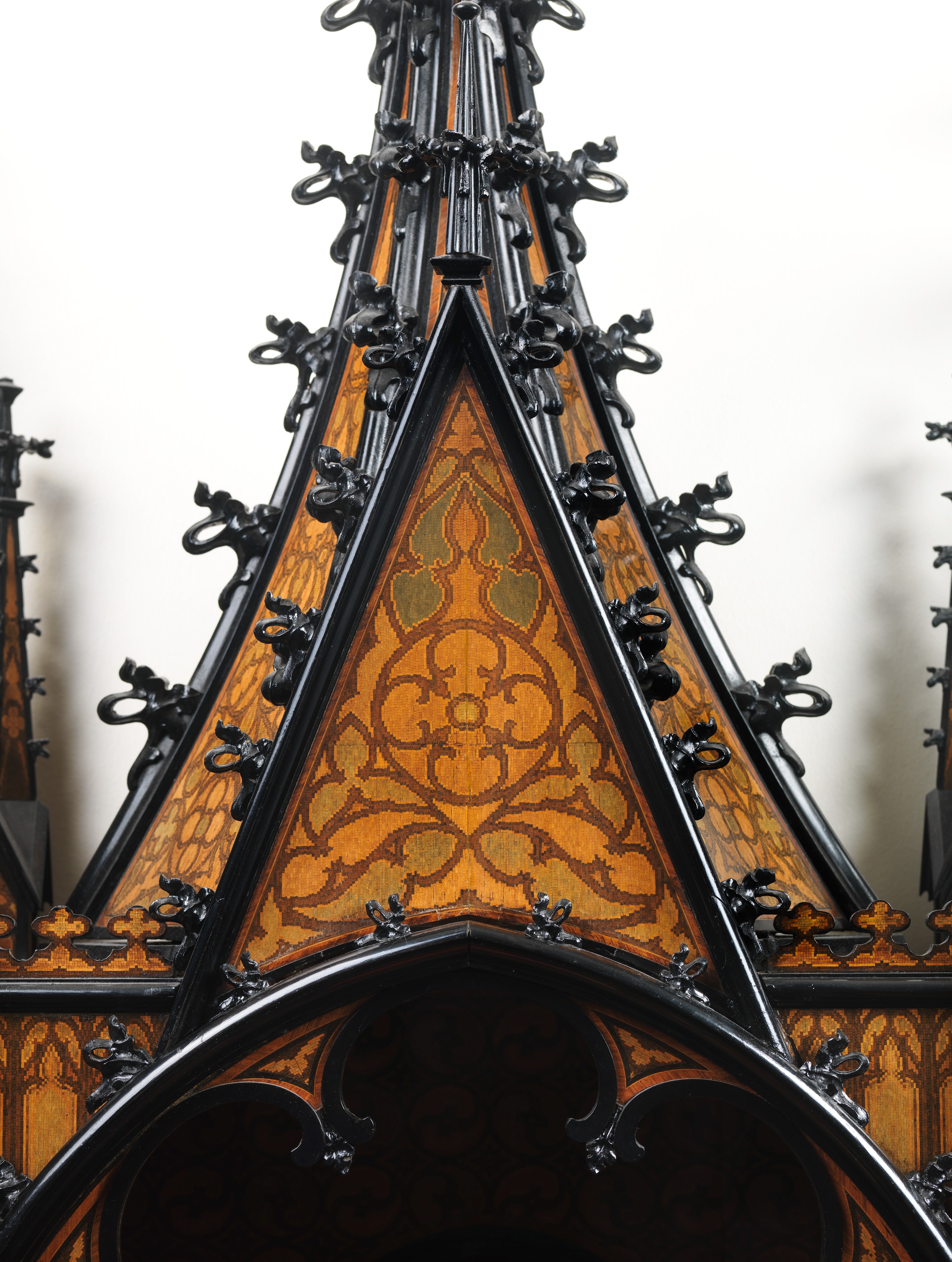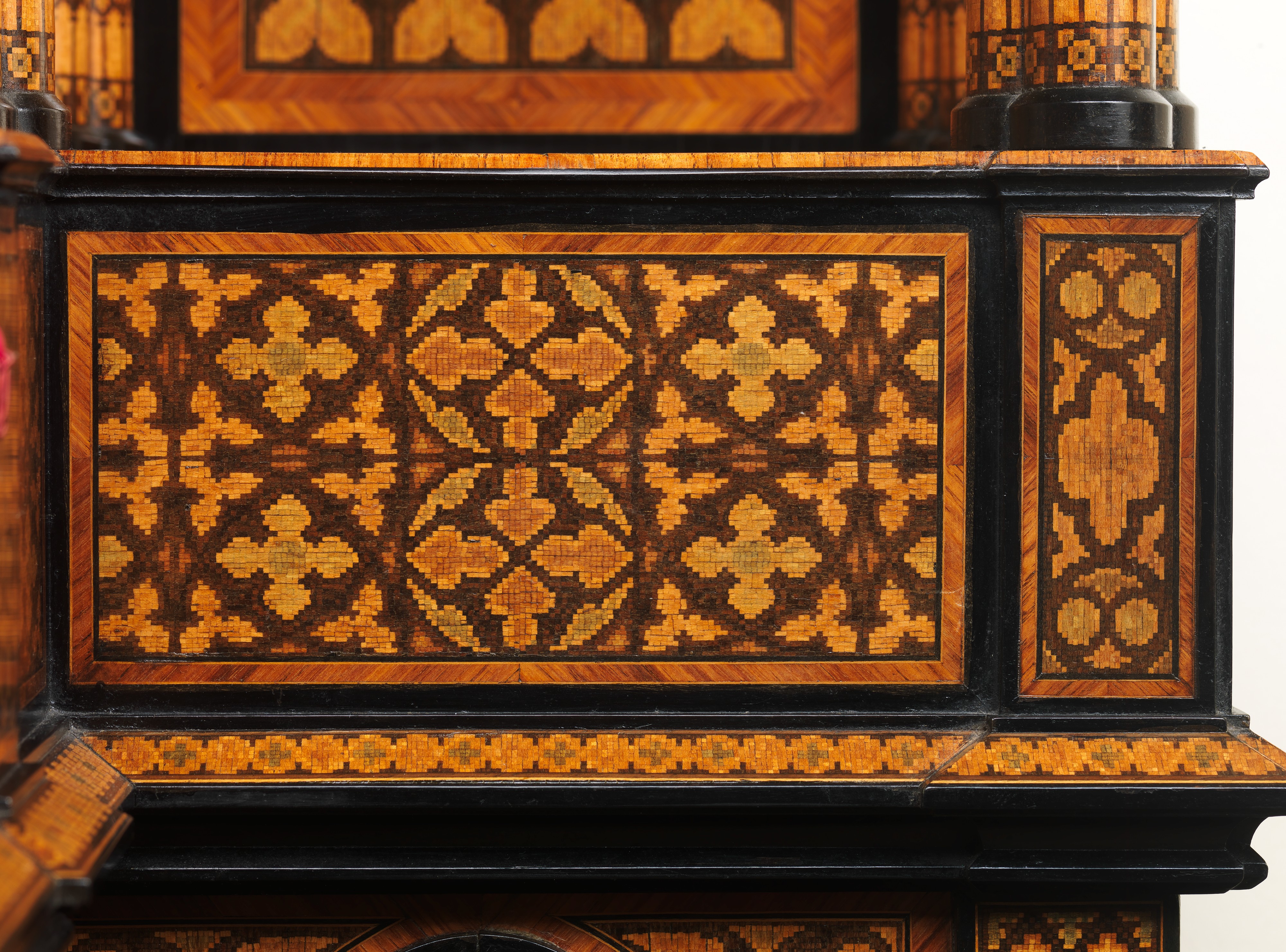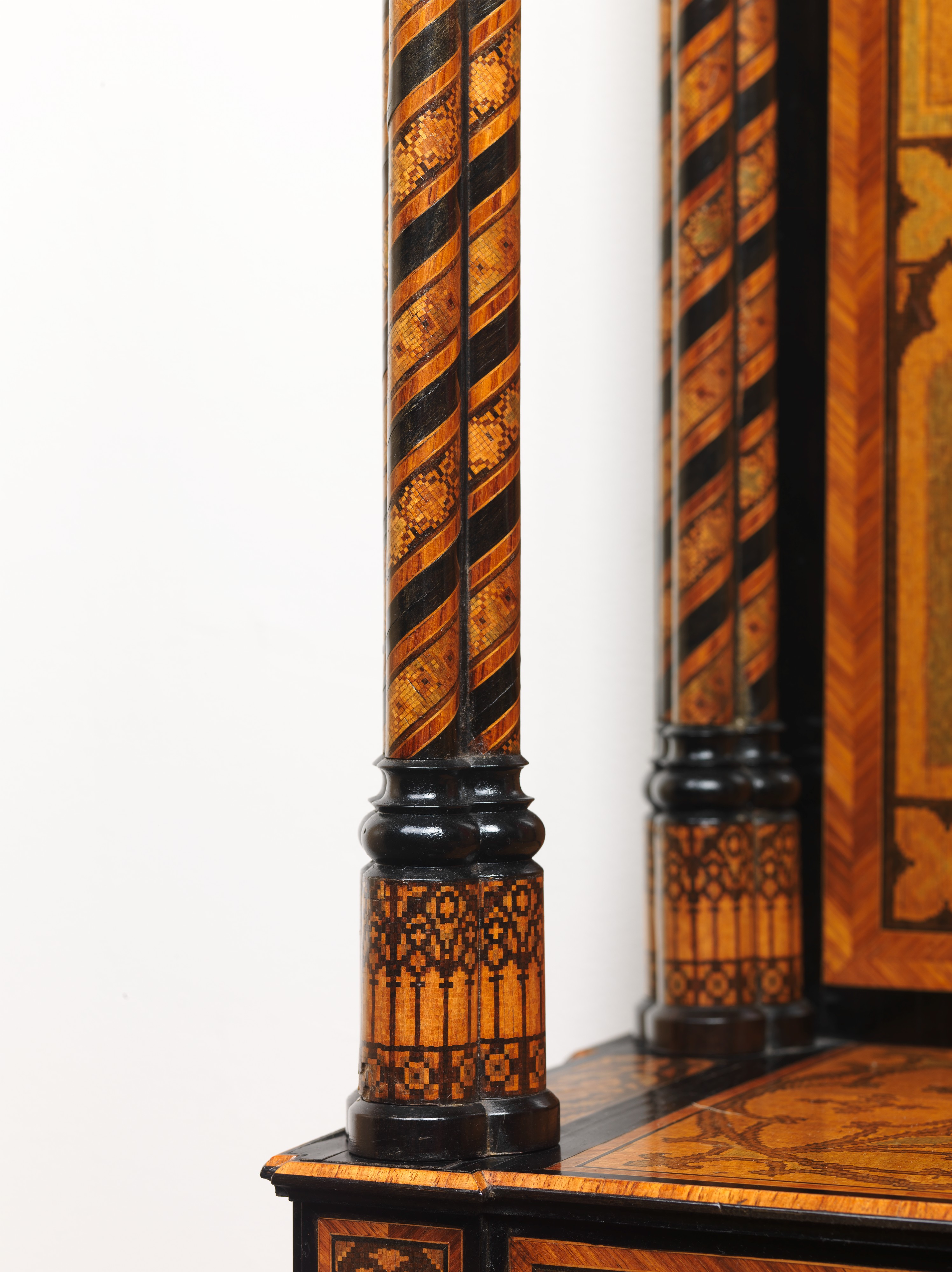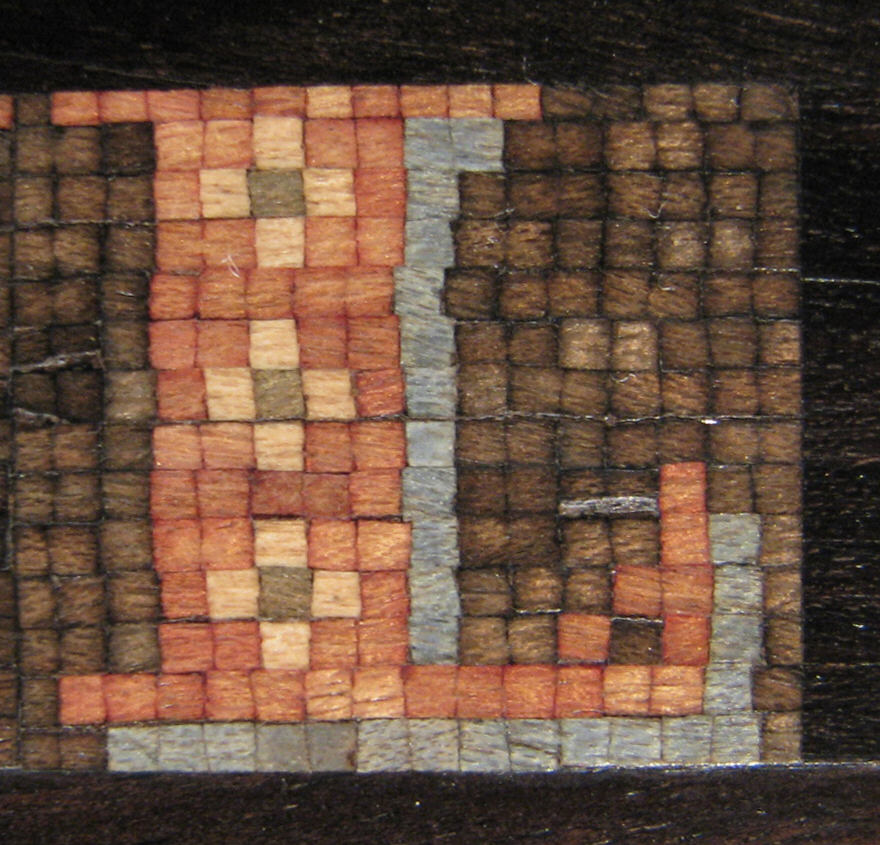Prie-dieu
With its towering silhouette of crocketed spires and pediments combined with pointed arches and myriad slender columns, this prayer stool intended for private devotion fully embodies the Gothic Revival style fashionable in Europe during the middle of the nineteenth century. Commissioned by the Viennese firm of Stammer & Breul to be shown at the 1855 Exposition Universelle in Paris, the nearly nine-foot-tall prie-dieu was clearly inspired by religious architecture of the Middle Ages. It was an ambitious piece for these tabletiers, or dealers who specialized in the sale of small pieces of furniture and luxury goods. A critic reviewing the Paris exposition in "The Ecclesiologist"of October 1855 praised the paper-thin micromosaic surface decoration as “so elaborate that it is said to consist of 2,500,000 pieces, [ which ] throws into the shade our boasted elaborate exiguities of Tunbridge ware.” Once even more colorful, the amazingly fine mosaic technique, usually reserved for the embellishment of small-scale objects such as those produced in the British spa town Tunbridge Wells, further enhances the prie-dieu’s Gothic character with its almost textilelike patterns incorporating trefoil arches, lancets, quatrefoils, and roundels.
Due to rights restrictions, this image cannot be enlarged, viewed at full screen, or downloaded.
This artwork is meant to be viewed from right to left. Scroll left to view more.









